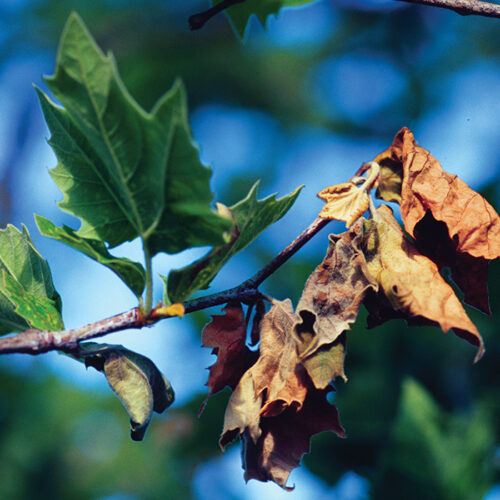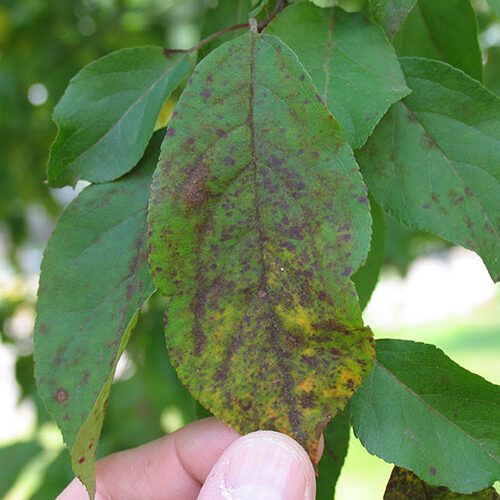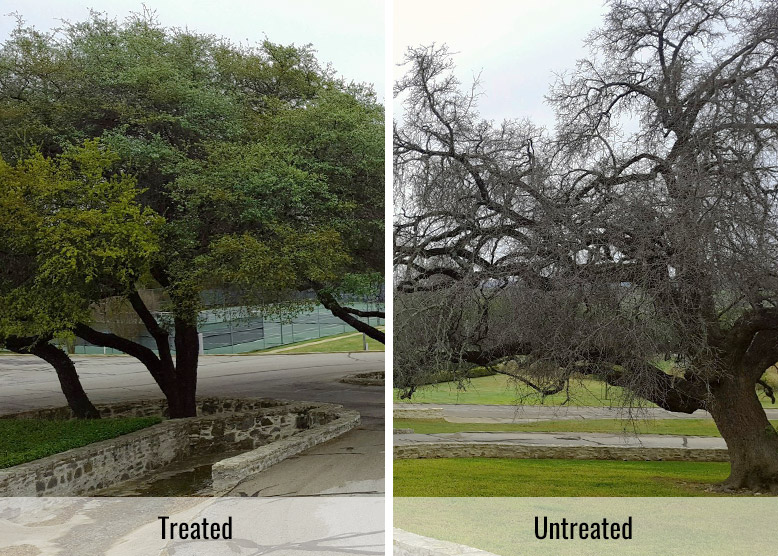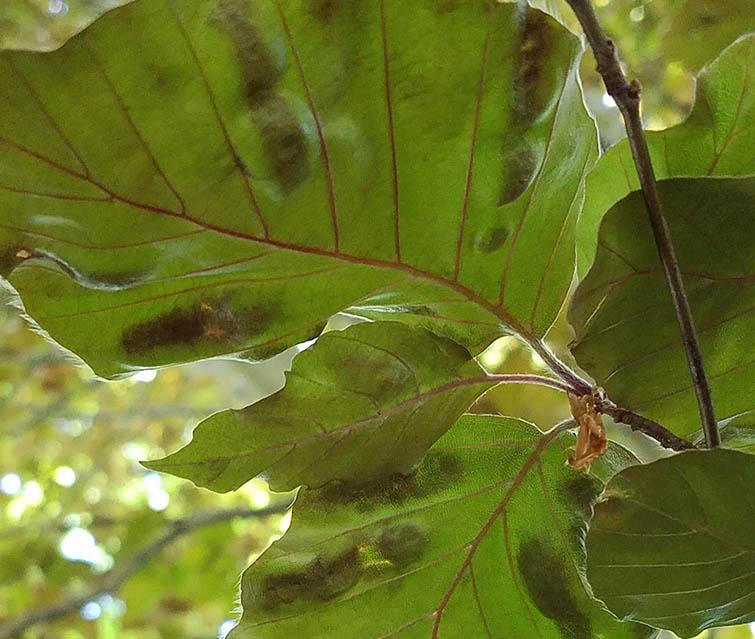Trees begin to leaf out in spring, which means it’s time to start thinking about leaf disease issues you may encounter in the coming months.
Diseases in trees and leaves are often caused by bacteria or fungus, and occur when a susceptible plant is exposed to the right pathogen under favorable environmental conditions. Some diseases are invasive, like Dutch Elm Disease, and others are caused by native sources. Leaf diseases can cause leaves to die prematurely and eventually lead to plant death.
Here’s a look at how to treat for leaf diseases in plants:
Types of Leaf Diseases
There are several common types of leaf diseases that can affect all kinds of trees. Make sure to know what signs to look for.
- Anthracnose: A fungal disease that can spread readily under cool, wet spring conditions. Look for dry-looking reddish-brown leaves and early leaf loss.
- Apple Scab: Look for brown spots and yellow leaves on apple leaves, as well as on pear and hawthorn. Can spread during cool and wet springs.
- Beech Leaf Disease: Thought to be caused by a nematode species present in water. Look for withered beech leaves and black spots.
- Bur Oak Blight: Found in Midwestern states. Spreads more readily during wet seasons. Look for browning on newer leaves on bur oaks.
- Dutch Elm Disease: This famous disease has affected American elms and led to them being less commonly used as street trees.
- Fire Blight. A tropical bacterial disease that spreads most often to fruit trees such as apple and pear. Can be spread by pollinating insects. Look for wilted and browning leaves.
- Oak Wilt: A fungus spread through roots and insects. Look for leaf discoloration and defoliation in very short periods of time.

Reduce Risk Factors
Fungal diseases, such as apple scab, will proliferate under wet conditions. Diseases can also be spread through infected host plants or insect vectors; Dutch elm disease is spread by bark beetles that attack the trees.
Ensure that growing conditions are as favorable as possible by checking on soil health, nutrients, and moisture levels. Make sure plants are being planted in their native range and in conditions best suited to their growing needs, such as levels of sun, wind, soil drainage, and soil pH (which will likely require a soil test).

How to Treat Leaf Diseases
Products such as NutriRoot are a good base for increased root health and soil enhancement, which will go far in preventing leaf diseases from taking hold.
If a leaf disease has already progressed, either Propizol or PHOSPHO-jet can be used, depending on which specific disease is being addressed. Treatments of a plant growth regulator can help, and if insect vectors of diseases are a concern, inject trees with a systemic such as TREE-äge R10.

Monitor Progress and Adjust Treatment
Keep watch on the development of leaf disease even after treatment, especially if diseases persist in your region or the environmental conditions that led to the disease growth remain. In some cases, diseases such as Dutch elm disease require consistent watch, if they are native or established in the environment.
Some varieties of plants are more resilient to certain diseases, so it might be worth using them in place of more disease-susceptible varieties.
Leaf diseases can be a serious plant health issue, but with proper care and attention you can ensure your plants survive and thrive.

